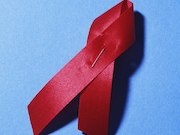Simulation favors screening at 25 for adolescents, young adults without identifiable HIV risk factors
TUESDAY, Jan. 9, 2018 (HealthDay News) — For young adults without known risk factors, a one-time routine HIV screen at 25 years would optimize clinical outcomes and be cost-effective, according to a study published in the January issue of the Journal of Adolescent Health.
Anne M. Neilan, M.D., M.P.H., from Massachusetts General Hospital in Boston, and colleagues simulated HIV-uninfected 12-year-olds without identified risk factors who faced age-specific HIV infection risks. The authors modeled a one-time HIV screen ($36) at age 15, 18, 21, 25, or 30 years, each in addition to current U.S. screening practices (30 percent screened by age 24).
The researchers found that all one-time screens detected a small proportion of lifetime infections (0.1 to 10.3 percent). A screen at 25 years led to the most favorable care continuum outcomes at age 25 compared to current screening practices, with a higher proportion diagnosed (77 versus 51 percent), linked to care (71 versus 51 percent), retained in care (68 versus 44 percent), and virologically suppressed (49 versus 32 percent). A screen at age 25 years not only provided the greatest clinical benefit but also was cost-effective ($96,000/year-of-life saved [YLS]) by U.S. standards of <$100,000/YLS compared with the next most effective screen.
“Focusing screening on adolescents and young adults ages 18 or younger is a less efficient use of a one-time screen among AYA than screening at a later age,” the authors write.
Copyright © 2018 HealthDay. All rights reserved.








